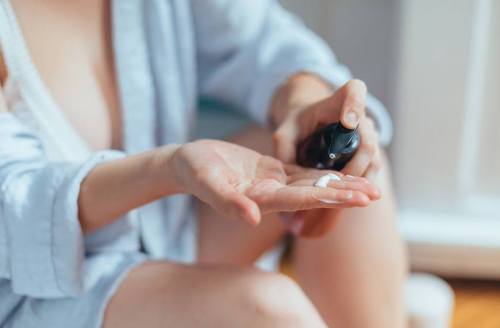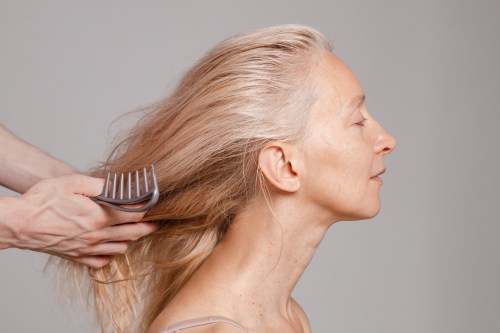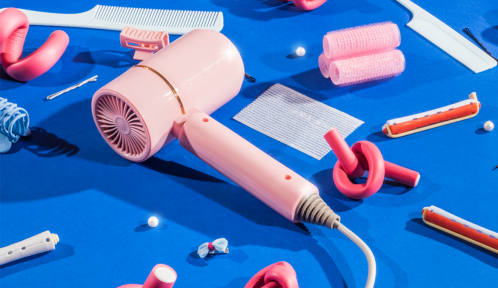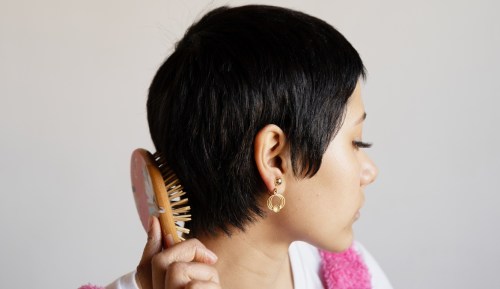Our editors independently select these products. Making a purchase through our links may earn Well+Good a commission
You know the feeling: You’ve just shaved your lady parts (at this point in your life, you’re not on team full bush), and are feeling fresh… until the next day, you notice one of those super annoying, painful bumps. It looks a heck of a lot like a pimple, but in all likelihood, it’s folliculitis (an inflamed hair follicle) or an inflamed ingrown hair.
“A normal hair grows inside a hair follicle and emerges on the surface of the skin,” explains Kenneth Howe, MD, a dermatologist at Wexler Dermatology. “A hair is ingrown when it’s growing outside the follicle and beneath the surface of the skin.”
Because the hair’s going rogue and not doing what it’s supposed to, your skin reacts. “When a hair is loose inside your tissues in this way, not housed within a follicle, your body perceives it as a foreign object, like a splinter,” says Dr. Howe. “It’s for this reason that ingrown hairs become inflamed.” That’s why you can sometimes mistake your ingrown hairs for, say, cystic acne—except, of course, there’s a real way to spot the difference.
Despite both looking like red, inflamed bumps, Dr. Howe notes that if you look very closely at an ingrown, you can actually see the trapped hair follicle. “To the naked eye, it might look like a dark dash mark or line,” he says. Of course, you may be able to tell it’s an ingrown because of how uncomfortable it is. Either way, one thing’s true: They’re annoying—and they’ll continue growing, tunneling below the skin’s surface, if they’re not dealt with.
Keep reading to learn more about the causes and ways of preventing ingrown hairs.

The causes of ingrown hairs
According to Dr. Howe, ingrown hairs are caused by the hair being prevented from reaching the skin’s surface. One such scenario? “Simply shaving or trimming hair leads to ingrowns, especially in some people with curlier hair,” he says. Others are simply prone to them.”Whenever such hair is trimmed or shaved short enough, the curling hair will be close enough to the skin’s surface such that it might re-pierce the surface of the skin as it grows.” This causes the follicle to become inflamed and the body to perceive it as a wound.
You can also get them from waxing “due to the traumatic nature of the hair removal,” according to Dr. Howe. “Oftentimes hair shafts shatter inside the follicle rather than coming out cleanly by the root. When that happens, the hair might be oriented out of position when it starts to re-grow.” Then, instead of growing like normal, it can pierce the follicle wall and grow loose in the tissue below the skin’s surface, resulting in a bump.
Prevent those suckers
If you get an ingrown, fear not—there are ways you can treat it. First and foremost, resist the urge to bring the hair to the surface, and instead rely on a chemical exfoliator, such as the Beauty RX Advanced Exfoliating Pads ($70) to do the trick for you. “You could also use tea tree oil ($20) since it soothes the skin and helps it recover without developing bumps,” explains Dr. Howe.
Granted, you’ll want to prevent them from happening in the first place—which is totally doable. The key to this? “Moisturizing!” says Dr. Howe. “Shaving tears off dead skin cells from the skin’s surface, but in an even and often irritating way. It’s important to soothe the skin with moisturizer afterwards to help it recover.” One way Dr. Howe suggests dealing? “Some patients like a product called Tend Skin ($20) which is meant to help prevent burns or bumps after shaving and waxing,” he says.
It’s equally as important to lay off of the spin class shortly after removing your hair. “Be careful not to exercise too soon after waxing,” says Dr. Howe. “Any perspiration in the area will cause stinging and irritation.” And if you missed a spot, don’t go over the stray hairs with a razor, as he notes that your skin’s too sensitive at that point and would be easily irritated or cut. Because nothing’s worse than trying to get a smooth, hairless surface only to find one of those annoying bumps.
To keep your tresses healthy, these are the best supplements for thicker, fuller hair. And here’s your glossary to all of the hair color trends.
Sign Up for Our Daily Newsletter
Get all the latest in wellness, trends, food, fitness, beauty, and more delivered right to your inbox.
Got it, you've been added to our email list.











